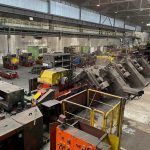
Optimization of start times and product sequences in a multi-line hot rolling mill
In a project together with voestalpine Böhler Edelstahl GmbH & Co KG, the start times and sequence of products in multi-line profile rolling plant are optimized. Based on mathematical models for processing times of all relevant plant sections, an algorithm that computes optimal product start times is developed. The algorithm considers the stochastic nature of the actual processing times. Moreover, a combinatoric optimization problem for the product selection and sequence is formulated and solved. Read more →
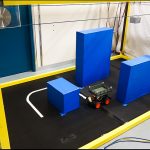
Fast trajectory planning for robotic systems in the presence of obstacles and dynamically moving targets
This research addresses the development of new methods for fast path planning in presence of obstacles and dynamically moving targets. Simulations and experiments are shown for a lab-sized cantry crane. Read more →
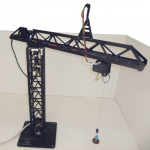
Optimization-based control methods applied to a laboratory-scale tower crane
Tower cranes are widely-used and constitute an interesting field of application for modern control theory. An important task is to control the position of the hook by suppressing the oscillating motion of the cable at the same time. Another possible goal is the rejection of disturbances such as different load masses or external forces induced by wind. Different control concepts are developed to cope with these and further goals. The resulting controllers are tested on a laboratory tower crane. The focus lies on optimization-based control methods, in particular model predictive control (MPC). Read more →

Hol-I-Wood PR
The correction of natural wood defects, such as resin galls or loose dead knots, interrupts the automatized production flow in timber industry. The human workforce is key for detection and classification of wood defects as well as for their correction. The project Hol-I-Wood PR aims at automatizing this monotone and laborious work. The resulting innovative "wood patching"-plant is going to be integrated into the shutter board production line of our partner company. Read more →
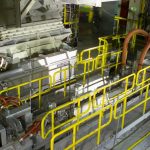
Modeling, observer design, and control of continuous strip processing lines
In continuous strip processing line, steel strips are thermally and mechanically processed as well as surface coated (e.g. galvanized). In this project, observer and control concepts for continuous galvanizing lines are developed. Additionally, controllers for laboratory facilities to develop new process technologies (e.g. laboratory furnaces) are designed. Read more →
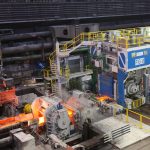
Modeling, observer and control design of a tandem hot strip rolling mill
Rough-rolled steel plates are rolled in a tandem hot rolling mill to strip with a final thickness. This thickness should accurately and uniformly correspond with the desired value. To satisfy this requirements and to ensure a stable strip travel, model-based control concepts are developed in this project. Read more →
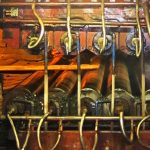
Modeling and control of hot levelers
Levelers are used in the production of steel plates in rollings mills to improve the flatness of the products. After rolling and cooling, a leveling machine reduces remaining flatness errors and residual stresses in the plates. This happens by alternate plastic bending of the plate material between the work rolls of the leveler. Read more →
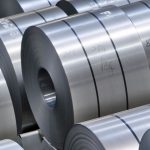
Modeling, observer design, control, and optimization of strip annealing furnaces
In the steel industry, continuous strip annealing furnaces are used for the heat treatment of strip products. To meet the high demands on the quality of the final product, the strip has to be heated to a predefined target temperature while it moves through the furnace. This is a challenging control task because an annealing furnace is a complex, nonlinear, thermodynamical multi-input-multi-output system and many process variables cannot be measured. Read more →
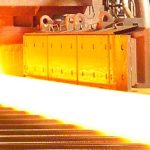
Lateral guiding and shape control in heavy plate rolling
In the rolling process of heavy plates, contour errors (deviations from the desired straight contour in the top view) and a lateral off-center position of the plate in the rolling mill may occur. Tailored continuum-mechanics models explain the reasons for these errors. The errors are monitored in real time by a camera-based measurement system. Model-based control strategies ensure that contour errors are avoided and that the plate moves straight through the rolling mill. Read more →
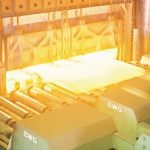
Modeling, observer design, and control of continuous slab reheating furnaces
In the steel industry, products are reheated in continuous reheating furnaces as a preparation for rolling. The reheating process requires large amounts of energy and incurs high costs. The temperature during this process is decisive for the product quality. Based on mathematical process models, state observers and controllers for the non-measureable product temperature are developed. The nonlinear model-predictive multi-input multi-output controller ensures a high accuracy, minimized energy consumption, and reduced CO2-emissions of the reheating process. Read more →